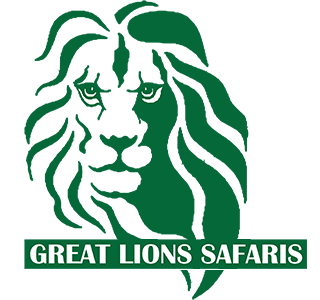A once-in-a-lifetime opportunity to see the magnificent mountain gorillas in their native environment is gorilla trekking in Uganda. These pointers will be useful whether you’re hiking in Mgahinga Gorilla National Park or Bwindi Impenetrable National Park.
Secure Your Gorilla Trekking Permit in time.
In order to preserve the gorillas and lessen the human influence on their natural environment, the number of gorilla trekking permits issued each day is restricted. A gorilla permit in Uganda goes for $800.
If you want to get a permit, you should contact the Uganda Wildlife Authority or Great Lions Safaris early since they sell out quickly, particularly during the busy summer months (June–September) and winter months (December–February).
Getting Physically and Mentally Ready for the Trek
The treks to see the gorilla family may be strenuous on the body, and they can last anywhere from one to seven hours. Bwindi is known for its steep, muddy, and thickly vegetated landscape. Being in excellent physical shape is crucial if you want to enjoy your walk.
To get in shape for your vacation, walk, hike, or climb stairs on a regular basis in the months before you go. If you can mentally prepare yourself for a difficult trek, you will enjoy it more.
For a pleasant hike, it is essential to have the correct equipment. The following items are required of you.
When hiking on muddy or otherwise unlevel terrain, it is important to wear sturdy, waterproof footwear that provide enough ankle support.
Protect yourself from stinging nettles, insects, and scrapes by wearing long pants and sleeves.
The weather in Uganda is never certain. In the event of an unexpected deluge, you can remain dry with a lightweight raincoat and waterproof leggings.
Gloves provide additional grip on steep inclines and shield your hands from sharp branches.
Protect your footwear from dirt, water, and bugs with gaiters.
Wear a hat and sunglasses to protect your eyes from the sun when the weather is clear.
Essential for avoiding jungle bugs like mosquitoes, insect repellent is a must-have item.
To record such enchanting moments, bring along an extra battery-operated camera. You can’t use flash photography, so make sure your camera has a decent zoom lens.
It is strongly advised that you hire a porter. A porter will carry your load, lead you through difficult areas, and cheer you on for a nominal price (around $15 to $20). Hiring porters helps sustain the livelihoods of local community people, who are frequently themselves porters.
Gorilla trekking rules and guidelines.
It is essential that you adhere to the rules established by your guides in order to safeguard the gorillas and yourself.
Keep your distance from the gorillas by at least 7 meters, or 21 feet. This reduces the possibility of human-gorilla disease transmission.
Avoid Using Flash, to put it simply, gorillas’ normal behavior may be disturbed if they are startled by flash.
Reduce the Volume, the gorillas are sensitive to loud sounds, so try to keep your voice down.
Keep Calm, if a gorilla comes up to you, don’t move or make any unexpected noises. Inspect your handbook thoroughly and do what it says.
Get Ready for the Elevation
The elevation of Bwindi Impenetrable National Park ranges from 3,800 to 8,530 feet (1,160 to 2,600 meters) above sea level.
You can become tired or short of breath faster if you’re not used to being at high elevations. Listen to your body, drink plenty of water, and go at a leisurely pace.
Get a Good Night’s Rest and Have a Hearty Breakfast Before your gorilla hike, make sure you’re well-hydrated and got enough of sleep the night before.
Bring along plenty of water—at least 2 liters—and some energy items to keep you going on the hike, such almonds or granola bars.
Be patient if you want to see gorillas on your trek. Finding the gorilla families may take hours at times, but the thrill is in navigating the thick jungle, seeing other animals, and learning about the environment. Relax and take in the jungle’s sights, sounds, and aromas.
In Uganda, it is customary to tip. To tip your guides, porters, and trackers, bring small quantities of currency, ideally in US Dollars or Ugandan Shillings. Tipping is much appreciated since it helps support the people who work hard to make your experience possible.
A highlight of the hiking trip is interacting with local populations surrounding Bwindi and Mgahinga. Be considerate, get people’s consent before taking their picture, and immerse yourself in their culture to completely understand them. Going to community centers and artisan fairs is a great way to help out the locals.
The ideal time to go gorilla trekking in Uganda
All year round, you may go gorilla trekking in Uganda. However, the months of June to September and December to February are the ideal for this activity.
The paths are less muddy and the hiking conditions are better during these months. Rainy season gorilla trekking, on the other hand, may be just as enjoyable with lush vegetation and fewer tourists.
An exceptional journey awaits you on a gorilla trekking in Uganda! Be prepared, have a sense of adventure, and respect animals.
If you follow these guidelines, you will have a better trekking experience and will also help the local people and conservation initiatives that make this kind of encounter possible. Prepare yourself, have an optimistic outlook, and prepare to encounter the formidable mountain gorillas.

